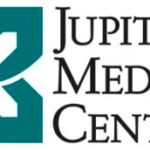By Steven Shill
The COVID-19 pandemic exposed the deadly disparities lurking in the U.S. healthcare system, which resulted in worse health outcomes for marginalized and vulnerable people. Now, hospitals and health systems throughout the U.S. are prioritizing health equity for their patient populations.
In order to advance health equity, however, you first have to be able to measure it. And as BDO’s 2021 Health Equity Survey discovered, there’s no industry standard for measuring health equity. But that doesn’t mean your health equity efforts are in vain. What’s important is that you choose a measurement method and stick to it.
Here are three ways you can measure health equity in your patient populations:
- Quality of care. According to BDO’s survey, 62% of respondents use quality of care (QOC) KPIs — including health outcomes, hospital admissions and readmissions, mortality rates and access to care — to measure health equity. You can use these metrics to identify who in your community struggles the most to receive equitable care, then refocus your health equity efforts to understand and address the underlying causes.
- Community engagement. Community engagement can take the form of community surveys and health assessments, patient satisfaction and responses to community outreach. According to our survey, 34% of respondents track community engagement, which you can use to determine who you are struggling to engage with in your community and update your outreach and messaging accordingly.
- Demographics. Although demographics are often overlooked — just 22% of our survey respondents said they measure demographics to track health equity progress — they’re key to designing an approach to health equity that resonates with your patient population. Once you understand the demographics that your organization primarily serves, you can invest time into training your staff to better understand and connect with those populations.
There’s no right or wrong way to measure health equity. The important thing is that you select your KPIs based on your organization’s existing resources, patient population and approach to dispensing care. It’s also crucial that you remain consistent. Once you’ve chosen a KPI to measure, you have to stick with it. Otherwise, you’ll lose the ability to track your progress over time.
Looking for more insights to improve your health equity program in 2022? Scan the QR Code below to read our Health Equity survey report to benchmark your progress against your peers and get the guidance you need to take the next step forward.[WP1]

Steven Shill, Partner and National Leader – The BDO Center for Healthcare Excellence & Innovation, can be reached at sshill@bdo.com or (714) 668-7370.
Contact:
Alfredo Cepero, Managing Partner
305-420-8006 / acepero@bdo.com
Angelo Pirozzi, Partner
646-520-2870 / apirozzi@bdo.com


























